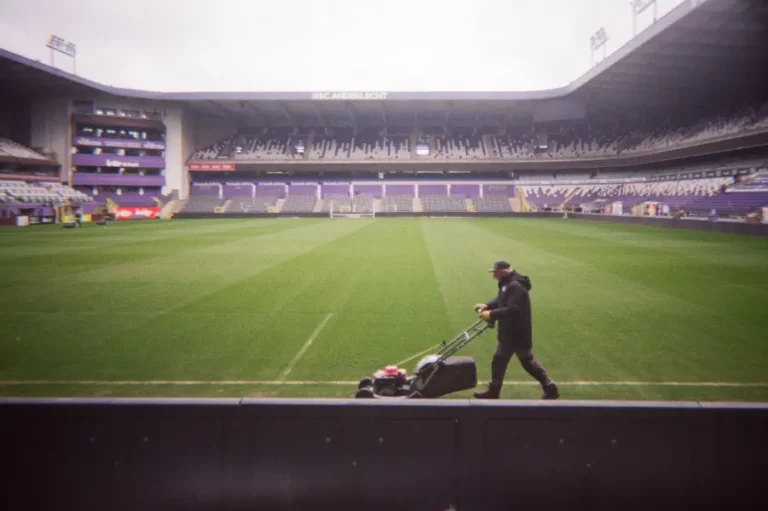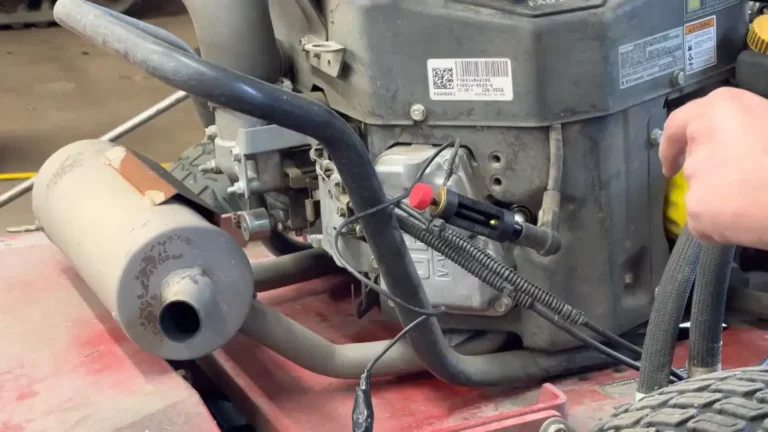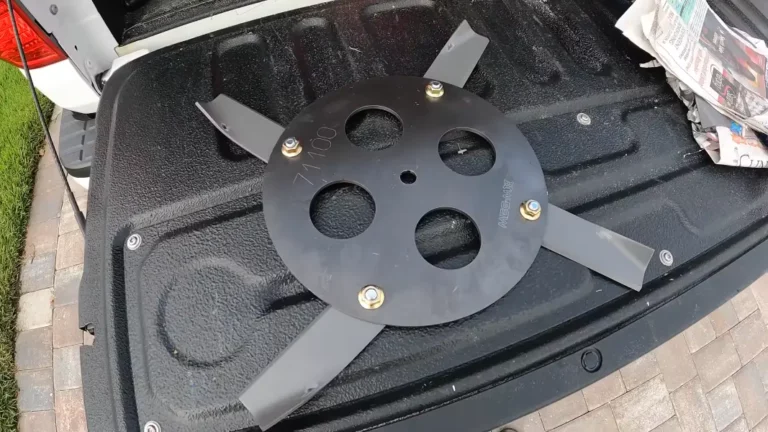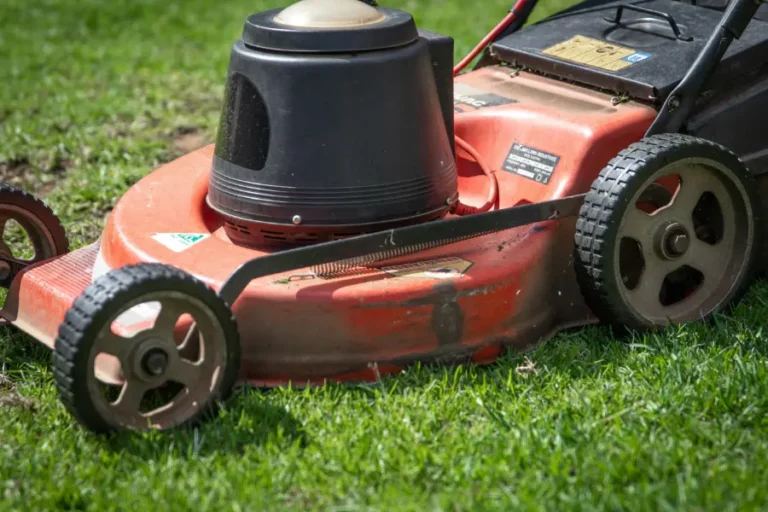6 Most Common 3 Blade Mower Deck Problems and Fixes
If you own a 3 blade mower deck, you know how frustrating it can be when things don’t go according to plan.
Some most common 3 blade mower deck problems are uneven cutting, clogged blades, or belt tension issues, these problems can be daunting to tackle.
Fortunately, with the right knowledge and techniques, you can troubleshoot and maintain your 3 blade mower deck for optimal performance.
Key Takeaways:
- Common issues with 3 blade mower decks can be easily identified and solved with proper troubleshooting techniques.
- Maintenance is essential to keep your 3 blade mower deck in good working condition.
- Blade speed and height adjustment significantly impact the quality of your lawn’s cut.
- The importance of proper wheel alignment and belt tension cannot be overstated.
- Regular cleaning and lubrication are crucial for prolonging the lifespan of your equipment.

Common 3 Blade Mower Deck Problems and Their Fixes
If you own a 3-blade mower deck, you may encounter some common issues that can hinder its performance. Here are the most frequent problems you may come across:
1. Uneven Cutting and Scalping
One of the most frustrating problems with 3-blade mower decks is uneven cutting, leaving your lawn with unsightly patches of tall grass. This may be due to improperly leveling mower deck, causing the blades to cut at different heights.
Another issue that may cause scalping is when the blades are too low and come into contact with the ground.
The Fix:
To resolve this issue,
- Pre-Use Inspection
- Before each use, thoroughly inspect your mower deck.
- Look for any signs of damage, wear, or loose parts that may affect cutting performance.
- Terrain Assessment
- Check the lawn for potential uneven areas, dips, or twists.
- Adjust the deck height to match the terrain, ensuring an even cut.
- Blade Maintenance
- Ensure that mower blades are sharp and in good condition.
- Dull blades can lead to uneven cutting, so sharpen them regularly.
- Blade Height Adjustment
- Set the blade height to the appropriate level for your grass type.
- Avoid cutting too low, as it can scalp the lawn, leading to uneven patches.
- Gradual Height Reduction
- Make multiple passes over the lawn, gradually lowering the blade height with each pass.
- This technique helps even out any high spots and ensures a consistent cut.
2. Clogged Blades and Debris Removal
Debris can build up on the underside of a 3 blade mower deck, causing the blades to become clogged and lose cutting power.
The Fix
To prevent debris build-up, regularly remove grass clippings, leaves, and twigs from the mower deck after use. Use a scraper or brush to remove stubborn debris from the blades and housing.
- Identification of Dull Blades
- Visually inspect blade edges for signs of dullness, nicks, or chips.
- Run fingers along the blade’s edge; if it feels rough, consider blade sharpening or replacement.
- Importance of Timely Replacement
- Dull blades can damage the grass and increase disease risk.
- They may strain the mower’s engine, leading to reduced performance.
- Choosing Replacement Blades
- Refer to the mower’s manual for manufacturer specifications.
- Consider grass type for optimal performance; choose blades accordingly.
3. Blade Dullness and Replacement
Mower blades can become dull over time and require replacement. Dull blades will tear grass, leaving it vulnerable to disease and pests.
The Fix
Here are the key points about maintaining and replacing blades on a 3-blade mower deck:
- Identification of Dull Blades
- Visually inspect blade edges for signs of dullness, nicks, or chips.
- Run fingers along the blade’s edge; if it feels rough, consider sharpening or replacement.
- Importance of Timely Replacement
- Dull blades can damage the grass and increase disease risk.
- They may strain the mower’s engine, leading to reduced performance.
- Choosing Replacement Blades
- Refer to the mower’s manual for manufacturer specifications.
- Consider grass type for optimal performance; choose blades accordingly.
4. Belt Tension and Alignment Issues
Proper belt tension and alignment are crucial for achieving optimal cutting performance on a 3 blade mower deck.
A loose or misaligned belt can cause uneven cutting and damage to the mower deck. Conversely, an overtightened belt can put excessive strain on the engine and lead to premature failure.
The Fix
Here are the steps for checking belt tension and alignment on a 3-blade mower deck:
- Check Belt Tension
- Turn off the engine and disconnect the spark plug wire.
- Inspect the belt for cracks, frays, and signs of wear.
- Measure the distance between the belt and the mower deck frame using a tension gauge or ruler.
- Adjust tension following manufacturer’s instructions, avoiding extremes of too tight or too loose.
- Ensure Belt Alignment
- Use a straight edge to compare front and rear pulley alignment.
- If misaligned, adjust pulley positions using shims or spacers until they are straight and parallel.
- Regular Maintenance
- Check belt tension and alignment regularly for optimal cutting and prolonged deck lifespan.
5. Improper Wheel Alignment and Leveling
Improper wheel alignment or uneven tire pressure can cause uneven cutting and scalping.
The Fix
Here are the steps for ensuring proper wheel alignment and leveling:
Step 1: Flat Surface
Place the mower deck on a flat, level surface.
Step 2: Adjust Deck Height
Set the mower deck to the desired cutting height.
Step 3: Measure Wheel Heights
Measure the ground-to-wheel height at both the front and back of one mower deck wheel.
Step 4: Level Wheels
If one measurement is higher than the other, adjust the wheel to level it out.
Step 5: Check Alignment
If the mower deck pulls to one side, loosen the wheel bolts and adjust it until it’s straight.
6. Blade Speed and Height Adjustment Issues
Achieving a well-manicured lawn hinges on precise blade speed and height adjustment. Blade speed governs the rotation rate, while height adjustment regulates cutting height.
If blades rotate too slowly, it leads to insufficient cutting performance, especially in tall or dense grass. Conversely, if they spin too quickly, it can cause excessive wear and potential damage to the grass.
Height adjustment issues may result in scalping, leading to uneven patches. Maintaining the right balance ensures an even, consistent cut for a beautifully groomed and healthy lawn.
The Fix
To solve this problem:
- Blade speed and height are crucial for a well-maintained lawn.
- Blade speed governs rotation, height adjustment controls cutting height.
- Adjust blade speed per manual: increase for thicker grass, decrease for thinner.
- Use height lever/knob for recommended cutting height, preventing scalping or uneven cuts.
- Check blade alignment after adjustments to avoid uneven cutting.
- Regular adjustments ensure a healthy, well-manicured lawn, enhancing your home’s curb appeal.
Related Post: Reasons Why Riding Mower Cutting Uneven (Problems and Fixes)
Frequently Asked Questions [FAQs]
What should I do if my 3-blade mower deck is struggling to cut grass?
Clear the underside of the deck, ensure the side discharge chute is clear, and sharpen or replace dull, bent, or loose mower blades. Adjusting the cutting height may also help.
What should I do if my 3-blade mower deck is smoking?
Clear the underside of the deck of excessive clippings, and if the smoking persists, consult a professional or contact the manufacturer.
What should I do if my 3 blade mower deck blades get clogged with debris?
If your 3-blade mower deck blades get clogged with debris, stop the mower, turn off the engine, and safely clear the debris using gloves or a stick. Regular cleaning and debris prevention are key to reducing clogs.




